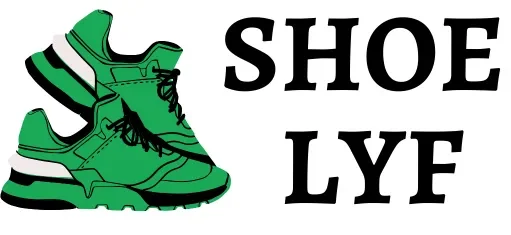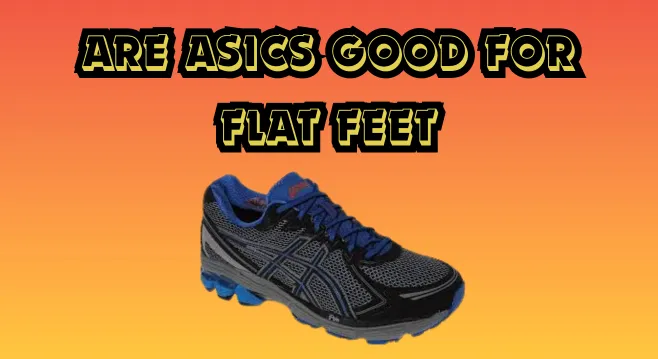What Makes a Good Shoe for Flat Feet?
Before we get into specific Asics models, it’s important we cover the criteria that makes a shoe a good option for those of us with flat feet (or fallen arches, as it’s sometimes called). While everyone’s feet are a bit different, there are some general design elements that help prevent overpronation while providing ample arch support:
Motion Control and Stability
When you have little or no arches, your feet tend to roll inwards excessively with each step, known as overpronation. This can cause all sorts of downstream pains and posture issues. Shoes with enhanced medial posting and “motion control” technologies help counteract overpronation for a more stable, neutral stride.
Firm Midsole Support
Flat feet lack the natural shock absorption of curved arches. So you need plenty of firm, dense cushioning underfoot – but not so much that your feet get thrown off balance and pronation gets worsened. Look for durable compression molded midsole materials like EVA or polyurethane.
Deep Heel Cups
Shoes for flat feet should have very deep, snug-fitting heel cups to prevent your feet from sliding out of alignment as you walk or run. The heel needs to be cradled and locked in place from the very first step.
Wide, Straight Lasts
Narrow or severely curved shoe lasts can actually exacerbate overpronation in flat feet. Instead, you’ll want a wider, straighter forefoot and toe box shape that allows your foot to splay out more naturally.
Arch Support and Reinforcements
Whether through rigid plastic shanks or sculpted arches in the sole itself, arch support and reinforcements are a must for anyone with low or no arches. These “external arches” prevent your own arches from collapsing further.
Breathable, Plush Uppers
Finally, the uppers of flat feet shoes should have ample padding and reinforcement, but still remain breathable and soft. Moisture-wicking materials help prevent blisters and hot spots from developing as your feetswell.
How Do Asics Shoes Help with Flat Feet?
Asics has long been a leading athletic footwear brand for those needing extra stability, support and motion control features. Many of their signature technologies were practically built from the ground up for combating issues like overpronation and flat feet:
The Asics Guidance Line
Most Asics performance shoes feature a “Guidance Line” technology – essentially a vertical groove on the outsoles that enhances your gait from landing to toe-off. This helps keep your foot biomechanically aligned.
I.G.S. Impact Guidance System
Asics’ I.G.S. system utilizes a complex design of components in the midsole to control pronation and provide shock dispersion upon each footstrike. Everything from the shape to the geometry is engineered to manage flat feet concerns.
Duomax Support System
Found in shoes like the Kayano line, Asics’ DuoMax system involves a dual-density midsole with firmer foam on the inside to resist pronation. It creates a sort of “anti-pronation core” to keep your stride aligned.
Dynamic DuoMax
Taking it even further, Dynamic DuoMax uses a more rigid plastic shank on the inside edge for even more built-in pronation resistance and motion control. For more severe overpronation and flat feet issues.
Trusstic System
Many of Asics’ more affordable stability shoes utilize their Trusstic System – a thermal plastic “bridge” that spans the length of the midfoot to prevent twisting and keep your foot locked over the center of pressure. Simple yet effective.
Ortholite Liners
Asics frequently uses plush OrthoLite insoles and liners which offer optimal moisture management and breathability – crucial for preventing hot spots and irritation when flat feet start to swell a bit.
Top Asics Shoe Picks for Flat Feet
With all those stability and motion control elements at play, Asics truly makes a wide range of shoes suitable for flat feet. Here’s a quick overview of some of their top product lines and models to consider:
Asics Kayano Line
The venerable Kayano is Asics’ premium stability/motion control shoe series. With Dynamic DuoMax, guidance lines, and tons of cushion, models like the Kayano 28 and 29 are amazing for overpronation from flat feet.
Asics Nimbus Line
For those seeking excellent arch support but a little more cushion and softness, the Nimbus line (like the Nimbus 24) is a great option. Featuring the I.G.S. system and solid pronation control.
Asics Cumulus Line
An affordable, no-frills alternative for mild to moderate pronation. The Cumulus 23 and 24 have nice arch reinforcement and gel cushioning without being super heavy and clunky.
Asics GT-2000
The GT series is quite comparable to the Kayano line, but at a more budget-friendly price point. The GT-2000 10 uses lyte EVA foam and a plastic Trusstic for stable pronation control.
Asics Gel-Venture
For trails and rugged terrain, the Gel-Venture offers a sticky lugged outsole while still packing in Asics’ I.G.S. pronation and flat feet support systems. Affordably priced too.
Asics Gel-Contend
Need a flat feet shoe for walking or light activity? The Gel-Contend walker provides subtle guidance features and a generously wide platform to accommodate flat arches. Available in tons of widths too.
Tips for Getting the Right Asics Fit
Once you’ve narrowed down your Asics model of choice, it’s critically important to get the right fit dialed in for optimal comfort and performance with flat feet. Here are some tips:
Get Fitted at Local Running Store
Don’t just buy online – visit a specialty running shop and have the staff perform a full gait analysis and fitting. They’ll assess your pronation level and recommend the best Asics stability shoe model and size to match.
Try Various Widths
Asics has tons of different width options for customized fit. Those with really flattened arches often need extra-wide models to allow for proper foot splay and alignment. Don’t be afraid to go wider.
Leave Room in the Toe Box
With flat arches, your feet will swell and expand more than average over long periods of walking or running. Leave a thumb’s width between your longest toe and the end of the shoe box to avoid cramping.
Pay Attention to Heel Lockdown
A securely locked-in heel cup is crucial for overpronators. Make sure there’s no slippage in the heel as you walk around – you may need to go up half a size for better fit. Also consider lacing techniques like the “heel lock” to snug up the heel area.
FAQs on Asics Shoes for Flat Feet
To wrap things up, here are a few frequently asked questions about using Asics shoes for flat feet:
What is the best Asics shoe for severe overpronation?
For very flat feet and severe overpronation issues, the Asics Kayano line (like the Kayano 28) and its Dynamic DuoMax stability system is among the most robust and maximum-support options.
Do all Asics shoes have arch support?
No, not all Asics shoes have special arch support or stability features built-in. You’ll want to look for their stability, motion control, and structured cushioning shoe lines specifically if you need low/flat arch support.
Can you put inserts or orthotics in Asics shoes?
Absolutely! Asics shoes have removable insoles so you can insert quality over-the-counter arch supports or custom-made orthotics as needed to augment the built-in support.
What is the difference between Asics motion control and stability shoes?
Motion control shoes like the Kayano have stiffer, denser components on the medial (inner) side to provide maximum resistance against overpronation. Stability shoes have less-aggressive pronation features.
How long do Asics pronation control shoes typically last?
With regular athletic use, you can expect to get 300-500 miles out of a quality motion control or stability shoe from Asics before the cushioning and pronation features start to break down. Listen to your body.

